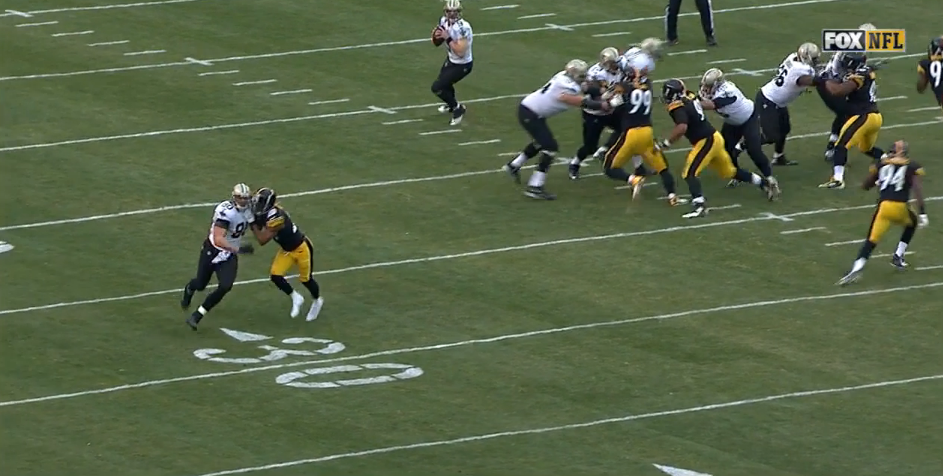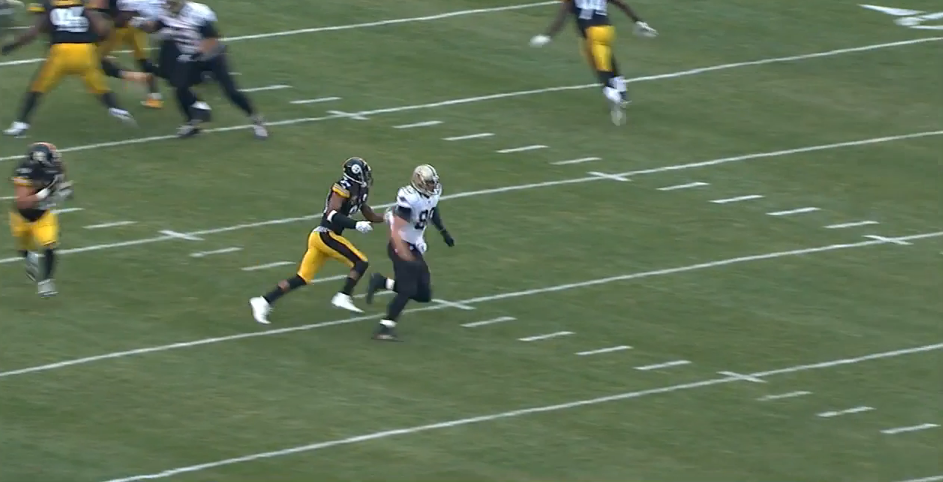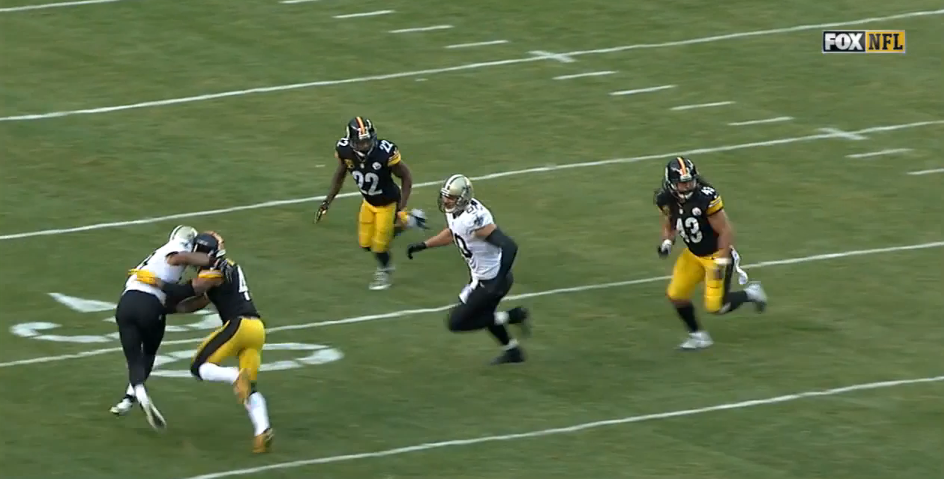Film Room: How the Steelers shut down Jimmy Graham
Week 13 was a long struggle for New Orleans Saints tight end Jimmy Graham.
On the Saints' first play, Graham was flexed by the right tackle in a Trips set. Near him, on the line of scrimmage, stood a Pittsburgh Steelers strong safety. The play began and the safety blitzed, leaving Graham wide open until a linebacker ran across the field to his inside hip and undercut his stick route. Graham was blanketed.
The Steelers’ game plan was to eliminate Graham. They constructed a blueprint based off of intense film study of Graham’s tendencies. They analyzed every split, every step, every route. Whereas many found the 6-foot-7 acrobat unguardable, the Steelers saw holes they could punch through.
One hole was Graham’s lack of physicality. They watched his routes over the course of the season and saw a man who did not like a fight. When the whistle blew, he tried to run around linebackers and safeties. If they leaned on him, he struggled to set up routes and find separation. It was the same story every time he struggled. Here, it would not be any different.
In the second quarter on a third-and-5, Graham was alone, flexed, against a Steelers cornerback on the quarterback’s right, when he released outside. The cornerback pushed on Graham’s inside shoulder like he was bench-pressing and then pulled down on it like he was hanging off of a cliff. He shuffled his feet. Graham labored downfield as he tried to straighten his shoulders.

After five yards, Graham planted his left cleat and twisted it to cut on a quick out route. The quarterback looked at him, but there wasn’t enough separation from the cornerback to throw the ball. He hitch-stepped through the pocket and dumped the ball off underneath instead.
Beating down Graham wasn’t enough; the Steelers wanted to make sure his name did not appear on the stat sheet, not even once.
During their exhaustive preparation in the week that led up to this game, they studied the top of Graham’s routes. They knew that, for his size, he would not be the quickest cutter. It was not so much a hole in his game as it was a vantage point of his routes. It let the Steelers see when he was going to cut, giving them a chance to cover him quicker. One defender would run in front of Graham. Another would run over top of him. It would essentially be endless bracket coverage, a seemingly safe but contradictory gamble.
Midway through the second quarter, on a play-action pass, Graham released inside on what appeared to be a dig route. The cornerback jammed Graham and ran next to his right shoulder with his arms extended, at times pulling on Graham’s right arm. Graham then turned downfield to square his shoulders, leaving the cornerback behind, thinking he had him beat.

But when Graham’s shoulders teetered left, the cornerback anticipated Graham would break over the middle and made a sudden cut underneath to jump the route. When Graham did exactly that, the cornerback became the tight end. Had the quarterback thrown the ball, it would’ve been intercepted.
The Steelers’ bracket tactics were dangerous because they meant there was another Saints weapon on the field that had one-on-one coverage. It meant that if there was any kind of breakdown by an isolated defender, the defense would be ravaged.
Less than three minutes after the aforementioned play, the Steelers were beaten for the game’s first touchdown, a 15-yard pass to the Saints’ second tight end, Benjamin Watson. Watson had run a wheel route through the flat and down the sideline. A deep-third cornerback had lingered too far in the middle of the field, where Graham had run a bend route.
The Steelers stuck to their defensive game plan, though. Later, in the fourth quarter, they tried to undercut Graham’s route again.
On third-and-3, the Saints went to a staple passing concept, a post-wheel combination. Graham ran straight downfield and, after 10 yards, rounded outside. His route looked like a deep out. The Steelers defended it with a Cover 3 variation from their fire-zone blitz package. It had three underneath defenders and three deep defenders, including a nickel cornerback in off coverage and a single-high safety. The safety was responsible for any deep routes.

When Graham cut outside, the nickel cornerback was over the top. The free safety, meanwhile, crashed hard underneath to undercut his route.
Then Graham wheeled down the sideline and burned both defenders. A receiver, initially outside of Graham, ran downfield as he was held by a cornerback. If not for the hold, the receiver would have run a post route in the middle of the field for a big play. Instead the quarterback was sacked and a holding penalty was called on the cornerback.
The Steelers’ plan to shut down Graham worked. He was held without a catch the entire game and was not targeted once. But their focus on Graham opened up other avenues for the Saints offense. The offense picked apart the Steelers’ isolated defenders to spread the ball around to nine different pass-catchers for five touchdowns. In the end, they racked up 35 points in an upset win.